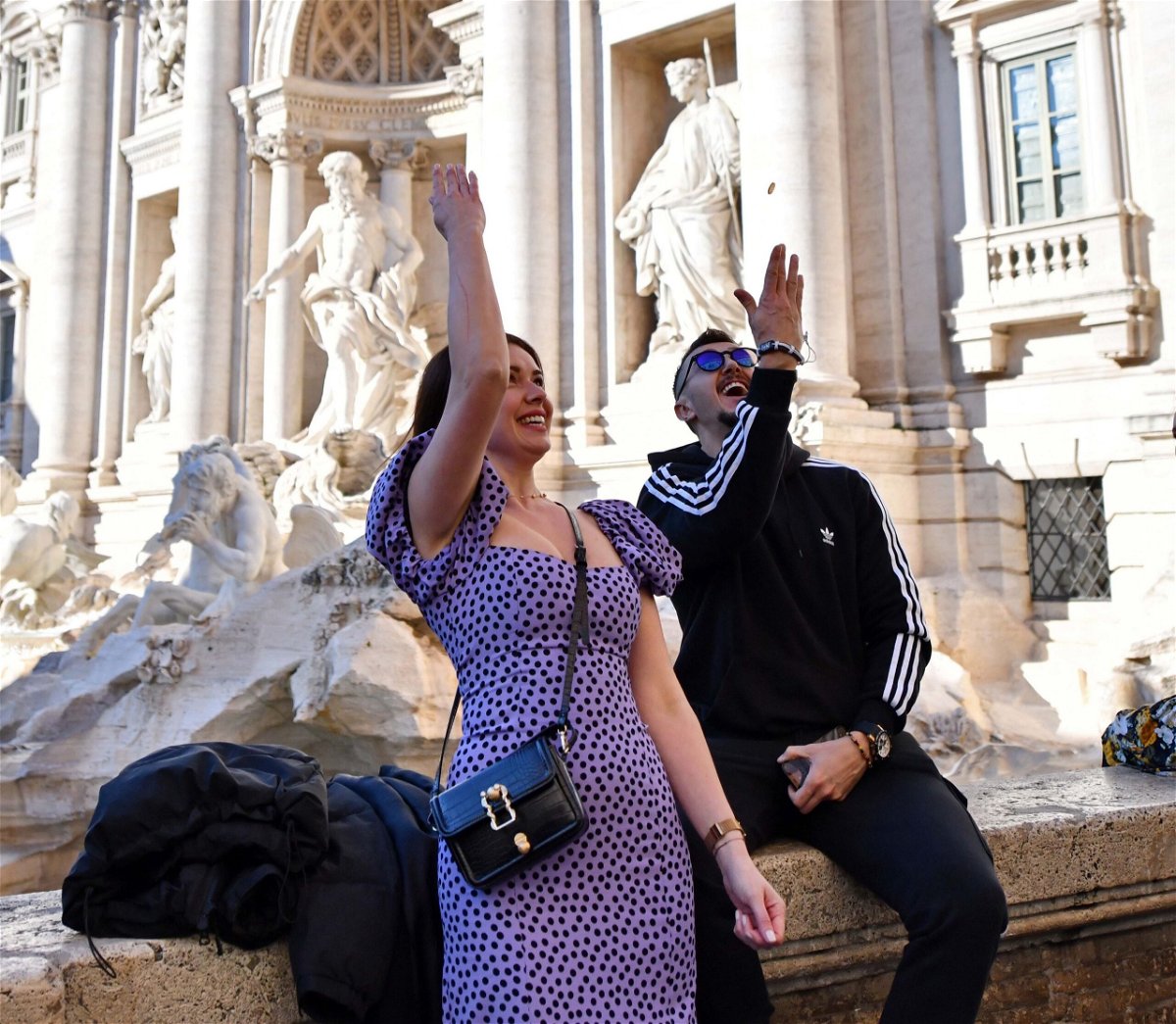Why do we toss coins into fountains?

"Three Coins in the Fountain" cast members throw their loose change in Rome's famed Trevi fountain while on-location for the movie in 1954.
By Samantha Murphy Kelly, CNN
(CNN) — All over the world, and for centuries, people have thrown coins into fountains, wishing wells and rivers for good luck.
It’s a tradition widely depicted in movies, ranging from Disney’s “Snow White and the Seven Dwarfs” to the 1954 film “Three Coins in the Fountain”; and in the lyrics of viral modern songs such as “Call Me Maybe.”
Throwing coins into fountains is a practice many people have grown up seeing and a superstition many have participated in. A trip to Rome is not complete without a coin toss backward into the Trevi for the promise of one day returning to the city. Some fountains collect thousands, or even millions, of dollars worth of coins each year.
So why do people do this and what happens to all of that money?
Although its origin is unknown, the custom dates back to Roman-British and Celtic mythology. The idea stems from people leaving a monetary offering to spirits or supernatural forces that exist in nature. It has long been believed that spiritual entities reside in or transit through water because it’s a cleansing element necessary for life.
One of the oldest examples of a wishing well resides in England’s Northumberland County in England where people made offerings to the goddess Coventina. Thousands of coins were found within the well from eras between the first and fifth centuries, according to researchers at the UC Irvine, proving people have been throwing coins for generations.
Bill Maurer, an anthropologist and the dean at the University of California Irvine’s School of Social Sciences, said many cultures previously used offerings such as food, special stones, carved artifacts and herbs. But with the invention of coinage in what is now modern-day Turkey between 500 BCE and 600 BCE, people largely switched to money.
Coins often have images, texts and symbols particularly suited for rituals. If someone believes in another worldly power, and they want it to do something for them, offering up a coin is considered a serious recognition for the higher power, Maurer said.
“It’s not so much about the payment, but how the coin itself has a quasi-magical property people think comes with it,” he said. “It has a connection of sovereignty and represents a token of authority.”
Some cultures over the years have prioritized one metal over others in their offerings, such as silver, but Maurer said the monetary amount doesn’t typically make a difference. “It’s more about the idea of a sacrifice. The Gods are not capitalists.”
Healing powers?
The tradition has evolved over time, even beyond water. Nowadays, Stefan Krmnicek — an anthropologist from the University of Tuebingen in Germany who studies coinage throughout history — said documented cases in East Asia show where people have thrown coins into the airplane turbines as good luck charms while boarding. (In 2017, an 80-year-old woman delayed a flight in Shanghai for five hours when a coin she tossed as a prayer ended up in the engine.)
People have flocked to other well-known wells and waters throughout history, including the Well of Pen Rhys in Oxford, which is said to have water with healing powers and the coins may sometimes land with prayers attached. Centuries ago, people placed coins into the wood of boats for good luck, too.
The superstition also crosses cultures and income levels: Even at Sotheby’s Auction House, art buyers sometimes leave coins at the base of statues of Ganesha, the elephant-headed deity of good fortune and overcoming obstacles.
Where the money goes
Some well-known fountains can collect thousands of dollars in coins each year. According to an NBC report from 2016, the Trevi Fountain accumulated about $1.5 million in coins that year. (The organization that collects these coins did not respond to CNN’s request for updated figures.)
In the classic children’s novel “From the Mixed-Up Files of Mrs. Basil E. Frankweiler,” two runaway children secretly living at The Metropolitan Museum of Art in New York City live on the coins they collect from its fountains each night. They were, perhaps, collecting a small fortune.
Private fountains can bring in big money, too. A spokesperson for the Mall of America in Minneapolis told CNN the fountains collect about $25,000 each year. Thousands of dollars reportedly accumulate annually in other fountains, including those across Disney Parks and Las Vegas casinos.
NBC reported a Catholic non-profit receives the coins from the Trevi Fountain after Rome city workers collect them each night; they are distributed to charities. Meanwhile, non-profits can apply to receive the money from the fountain donations at the Mall of America.
Other times, however, the coins just stay there in the fountains — perhaps keeping the wish alive?
And bypassers “don’t really want to collect them,” Maurer said. “Sometimes they are donated to charity but people are usually not keeping the money; that would be considered bad form.”
The-CNN-Wire
™ & © 2024 Cable News Network, Inc., a Warner Bros. Discovery Company. All rights reserved.